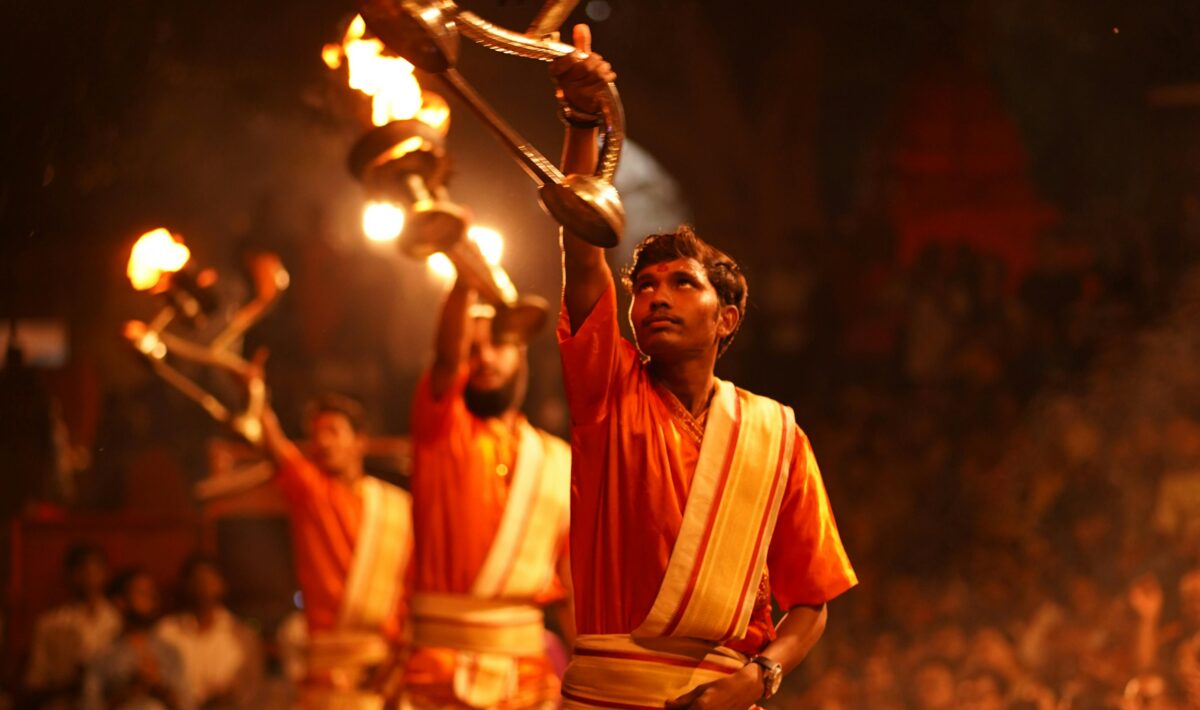Overview
This itinerary builds on the classic Golden Triangle by adding Varanasi, one of
the world’s oldest living cities and the spiritual heart of Hindu India. Many foreign
travelers choose this extended route to get a deeper cultural experience of North
India’s heritage. Typically, after finishing Delhi, Agra and Jaipur (days 1–5), travelers
head east to include Khajuraho’s UNESCO-listed temples and Varanasi (Benaras) on
the Ganges. This makes for a ~9–10 day trip, often called the “Golden Triangle with
Varanasi” tour.
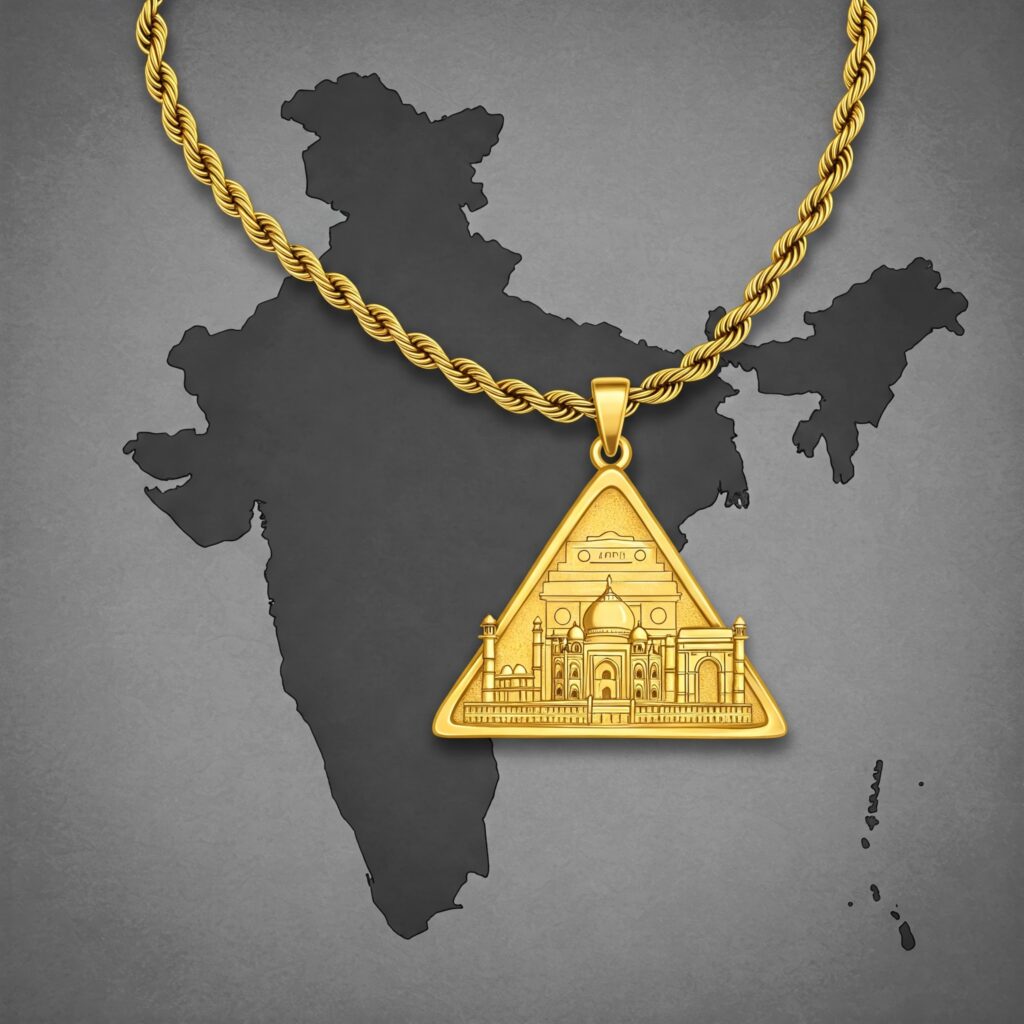
. It’s a popular option for those with a bit more time who want to see India’s spiritual side in addition to its monument highlights.
Khajuraho stop (optional): Khajuraho, in central India, is famous for its group of
medieval temples known for stunning sculpture and erotic carvings. It lies between
Agra and Varanasi, geographically, making it a logical stopover. One can reach
Khajuraho via a short flight from Varanasi or Delhi, or by an overnight train from Agra
(around 8–9 hours). Spending a day here to tour the Western and Eastern temple groups
is worthwhile for art and history enthusiasts. If pressed for time, some travelers skip
Khajuraho and go straight to Varanasi.
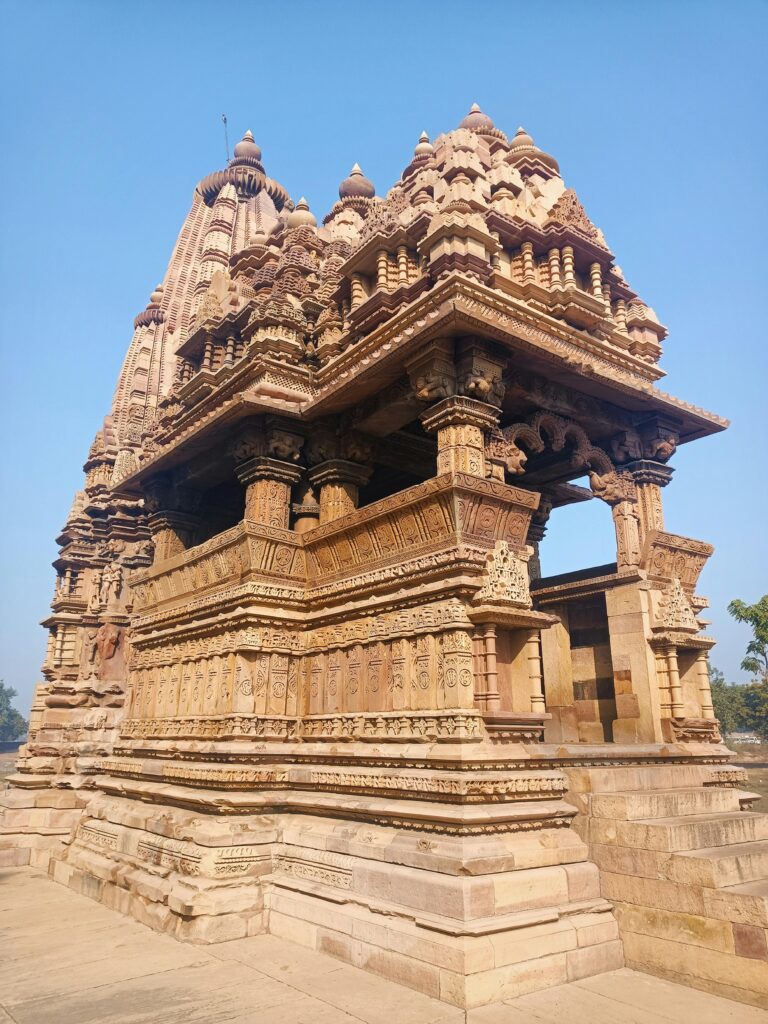
Khajuraho, for its architectural beauty.
Varanasi: Varanasi is often a trip highlight for its intense spiritual atmosphere. Every
morning, thousands of devotees and pilgrims descend the ghats (steps) to bathe in the
sacred Ganges River. Visitors typically take a dawn boat ride to witness the sunrise
over the river and see the ghats come alive with prayers and laundry and yoga. In the
evening, the Ganga Aarti ceremony at the main ghats (like Dashashwamedh Ghat) is a
must-see – priests wave lamps and incense in a captivating ritual that draws crowds.
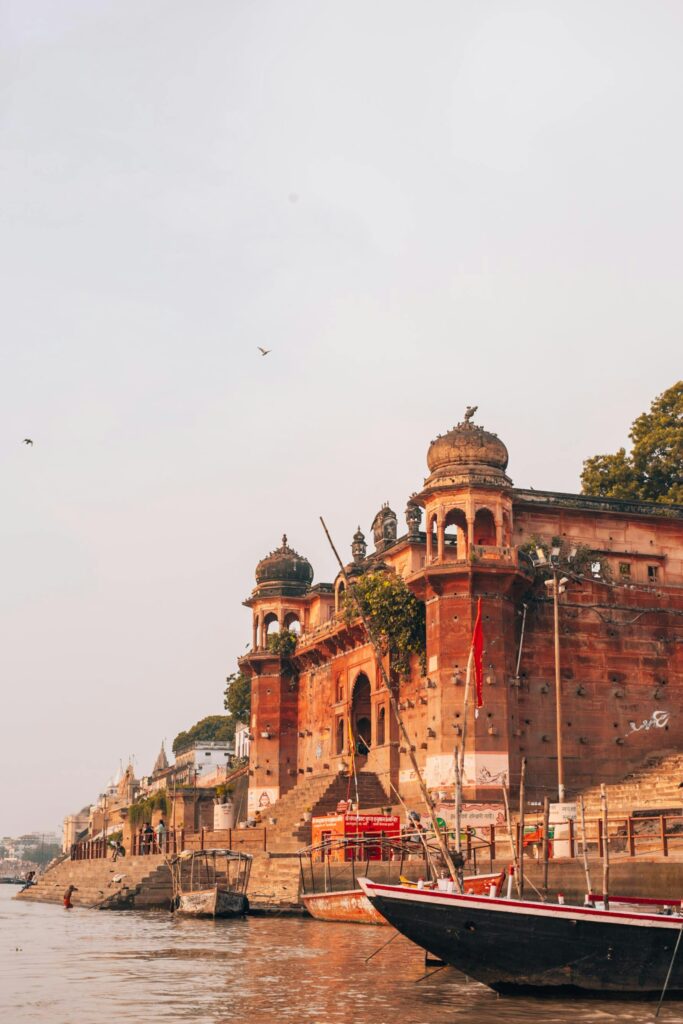
Walking the narrow lanes of the old city, visiting the Golden Temple (Kashi Vishwanath –
though non-Hindus have restricted access inside), and witnessing funeral pyres burning
at Manikarnika Ghat can be profoundly moving experiences. Varanasi provides a stark
contrast to the Golden Triangle cities – here the appeal is less about grand architecture
(though it has ancient temples) and more about living religious culture on the banks of
India’s holiest river.
Travel logistics
After Jaipur, one common route is to fly from Jaipur to Varanasi (via
Delhi) or take a train to Agra/Delhi then an overnight train to Varanasi. However, a more
seamless path is: Jaipur → (fly or train) to Khajuraho → (drive 6 hrs or fly) to Varanasi → (fly
or overnight train) back to Delhi. There is a direct overnight train from Agra to Varanasi
(e.g. Kashi Vishwanath Express, ~13 hours), which some itineraries use if skipping
Khajuraho take an AC sleeper train from Agra to
Varanasi and wake up to pilgrims in the Ganges. Flights have made connections
easier: Varanasi has an international airport with daily flights to Delhi (1.5 hours) and other cities, so many opt to fly back to Delhi after visiting.
Travelers can reach Varanasi from Delhi, Jaipur, or Agra via both flights and trains. Delhi to Varanasi has frequent direct flights taking about 1 hour 20 minutes, while Jaipur offers fewer direct flights with longer alternatives, and Agra has limited, often connecting flights. The Vande Bharat Express provides fast, comfortable rail connections between Delhi, Agra, and Jaipur, but does not directly connect all these cities to Varanasi. A dedicated Vande Bharat route operates between Delhi and Varanasi, offering a scenic and efficient alternative to flying. For Jaipur or Agra travelers, reaching Varanasi by train typically involves a transfer, usually at Delhi.
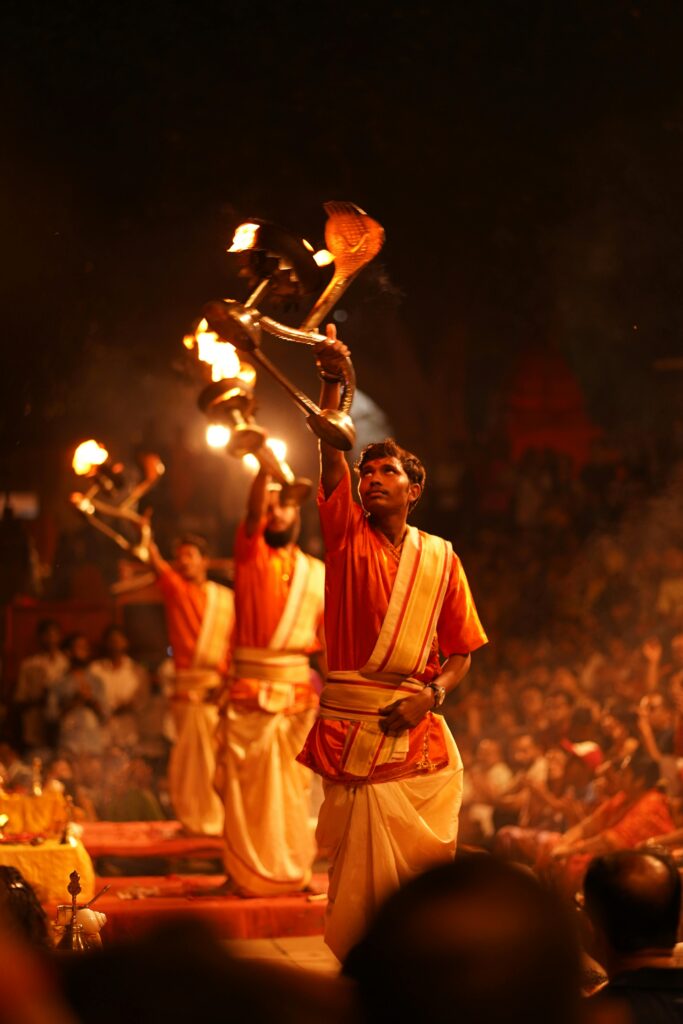
Within Varanasi, auto-rickshaws and cycle-rickshaws are common for moving around, but much of the old town is navigated on foot due to the narrow lanes.
Seasonal notes
Similar to the Golden Triangle, the best season is October–March when
Varanasi’s weather is pleasant (days ~20–28°C). Winter mornings in Varanasi can be
misty or foggy, which sometimes delays flights but creates a mystical atmosphere on
the river. April–June in Varanasi is very hot (over 40°C), and the stone ghats can be
scorching underfoot by midday. The monsoon (July–September) brings heavy rains and
the Ganges can swell; occasionally, high water levels submerge some ghats, and boat
rides might be curtailed. Still, Varanasi in monsoon is lush and fewer tourists come, so
it’s an option for the adventurous (with good rain gear). Khajuraho is in a hot, semi-arid
region – best visited in cooler months; summer there is also extremely hot.
Pros & Cons
Pros: This extended itinerary combines monumental history (Delhi/Agra/Jaipur +
Khajuraho’s art) with intense spirituality (Varanasi). Varanasi adds depth – giving insight
into India’s religious traditions and everyday life on the sacred river, which many foreign
visitors find enlightening and unlike anywhere else on earth. You also get a broader
geographic sweep of North India, including the rural heartland between Khajuraho and
Varanasi. The itinerary remains efficient: Varanasi is just a short flight from Delhi, so it’s
relatively easy to add.
Cons: The pace becomes faster with more ground to cover. Varanasi in particular can
be overwhelming – the sights, sounds, and even smells (from wood smoke at the
cremation ghats, for example) are intense. It can be a shock to the system (crowded
alleys, poverty in plain sight, etc.) for some travelers. Additionally, internal travel
(overnight trains or long drives) can be tiring – one must be prepared for at least one
long transit leg or an extra flight cost. Khajuraho and Varanasi also mean stepping into areas with slightly less tourist infrastructure than the Golden Triangle (though still well-trodden) – e.g. road conditions from Khajuraho to Varanasi are rough in parts.
Site closures/adjustments:
Varanasi’s religious ceremonies run daily without fail; however, note the main Taj Mahal closure Friday still applies during the Golden Triangle portion (plan accordingly as per Golden Triangle Itinerary ). Khajuraho’s temples are open sunrise to sunset daily. One thing to consider: holy days and festivals. If you visit Varanasi during festivals like Dev Deepawali or Maha Shivaratri, the experience will be extraordinary but expect massive crowds and possibly difficulty finding hotels. Conversely, some travelers deliberately time their visit for Diwali or Holi – experiencing Holi (spring festival of colors) in Mathura/Varanasi or Diwali lights in Jaipur can be memorable, but requires expecting disruptions (e.g. many shops closed, transport packed). If the itinerary coincides with a Friday in Agra, adjust Taj Mahal visit to Thursday evening or Saturday morning, as noted. Also, some museums (like Khajuraho’s archaeological museum)
close on Mondays, but the temples themselves do not.
Typical costs:
Adding Varanasi will add some cost – an internal flight (~₹4,000–6,000 or
$50–$80) or a comfortable train in 2AC class (~₹1,500, $20) per person. Hotels in
Varanasi range from simple guesthouses by the ghats (budget <$30) to luxury palaces
like BrijRama or Taj Ganges ($150+ per night). A reasonable budget for the full 9-10 day
Golden Triangle + Varanasi trip is $800–$1,500 per person mid-range. Backpackers can
still do it cheaply by train and cheap lodgings (maybe $40-50 extra total beyond Triangle
costs).
Local Guides Availability
Hiring local guides in Varanasi (for the old city walk or a boat tour) might cost
₹1000–2000 ($15–25). Government-approved guides are available in Varanasi and
Sarnath. Licensed guides can be hired at Sarnath’s archaeological zone (where the
Dhamek Stupa and Ashoka Pillar remains are) – often a good idea to understand the
Buddhist history. In Varanasi, many tour operators offer walking tours with licensed
guides to navigate the labyrinthine lanes safely. This itinerary gives a richer taste of
North India at a moderate extra expense and effort, and many consider the sunrise on
the Ganges or an evening aarti in Kashi a life-changing experience, making it well worth
it.
Plan with Travebrate
While an itinerary that covers the Golden Triangle and Varanasi already delivers a rich tapestry of India’s history and spirituality, it’s important to realize you’re only beginning to uncover the country’s spectrum of vibrant experiences. At Travebrate, we don’t just advise on the classic routes—we tailor your journey to align with the most spectacular festivals and cultural events happening during your travel dates and season. Wondering if your visit could coincide with the thrilling Kambala buffalo races, the adrenaline-pumping Jallikattu, Kerala’s electrifying snake boat races, or the mesmerizing Ganapathi Visarjan? We’ll help identify exactly what’s happening across India based on when you travel, and present you a curated list of festival and event options in a simple, two-step consultation. You choose what excites you most—even if that means tweaking your route for the ultimate experience—then finalize your bookings with your travel agent or on your own. Travebrate acts as your India experience advisor, charging a $100 planning fee for a customized itinerary that ensures you witness the best of India’s color, culture, and celebration. Prefer to self-plan? The India Fest Android app lets you explore festivals and events by date and region, empowering you with up-to-date options for every interest. For expert guidance, book your India itinerary with us at https://travebrate.com/india-fest-by-travebrate/ or check out the India Fest app today!


